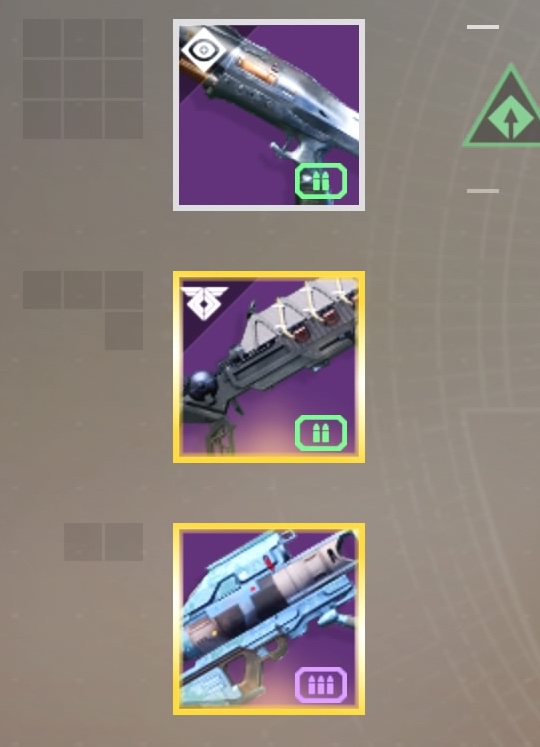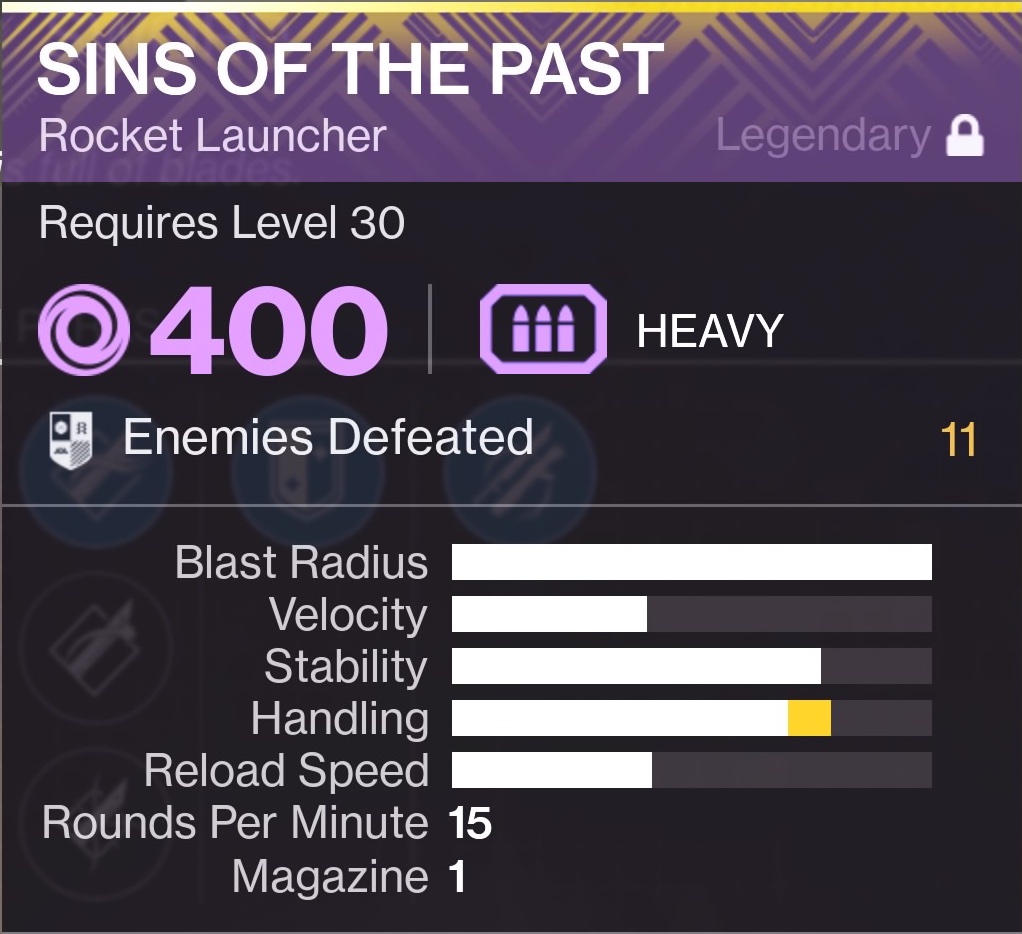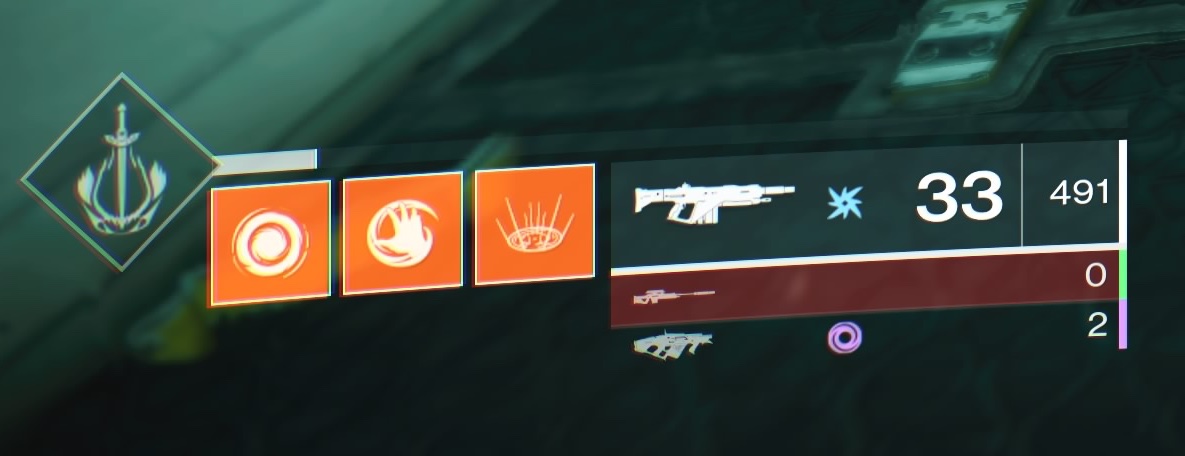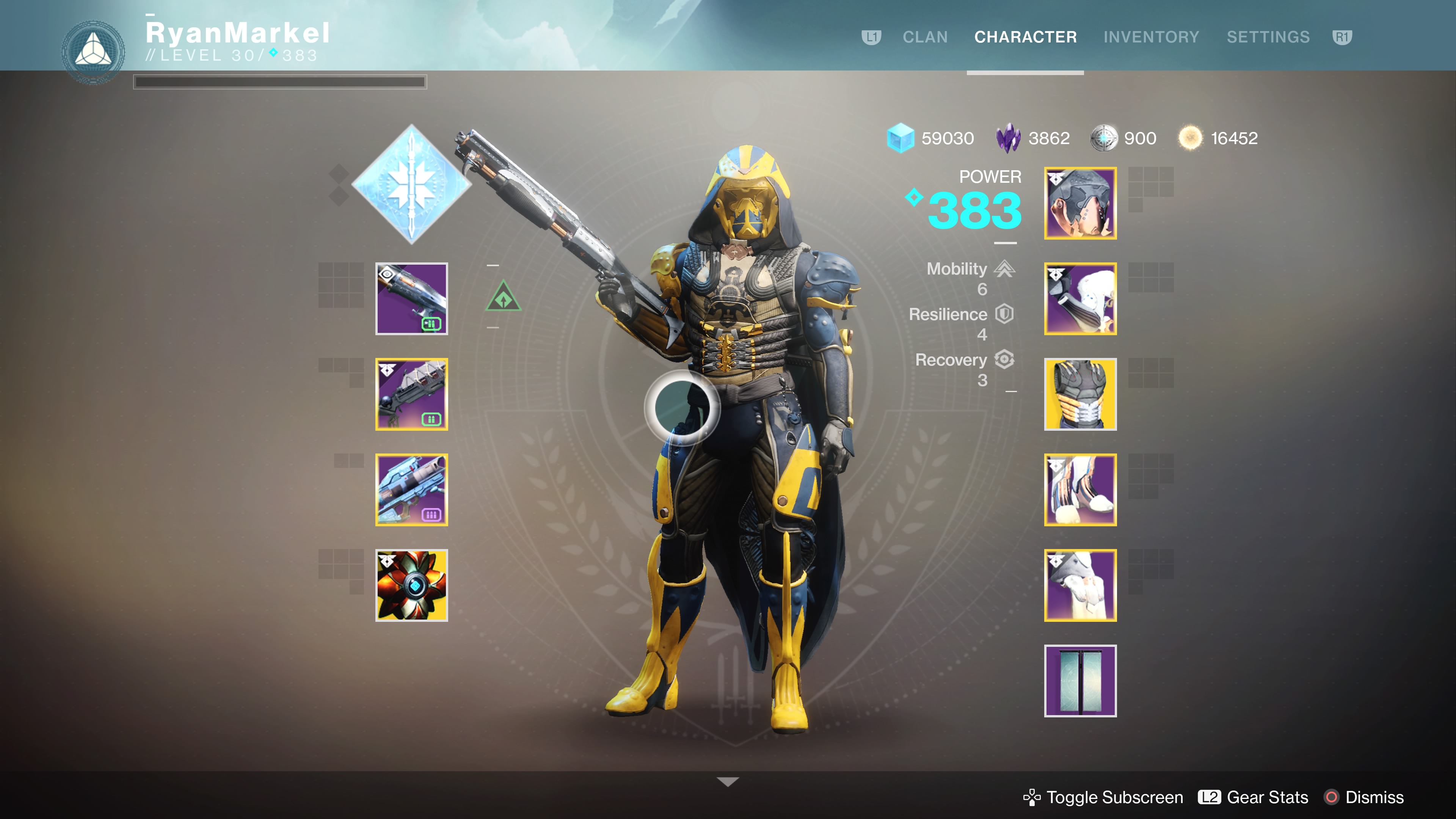With patch 2.0 to Destiny 2 this past Tuesday, the way weapons and ammo are organized within the game has fundamentally changed. It’s been confusing for some people, so I thought I’d try to explain it, if possible.
To start, here’s the easiest way to look at it:
- The slot a weapon is in and the type of ammo it uses are no longer the exact same thing
- The top two slots determine what ammo a gun uses based on the type of weapon, not based on the slot itself (white or green ammo)
- All weapons in the third slot take the same type of ammo (purple ammo)
- Ammo bricks now drop differently, with white ammo being most common, green being less common, and purple being the rarest
If pushed to write this in one sentence, it would be: weapon slots and ammo types have been decoupled.
Trust me: that’s the easiest way to phrase it I can come up with right now. If you want to learn more about the system, keep reading, and let’s talk about Destiny 1 and 2 and their weapon and ammo systems and how they have evolved.

Where We Came From: Destiny 1’s Weapon Slot System
Destiny’s weapon slot system had the following rules:
- There are three weapon slots.
- Primary
- Special
- Heavy
- Each weapon slot uses a specific color of ammunition.
- Primary uses white ammo
- Special uses green ammo
- Heavy uses purple ammo
- The type of weapon in each slot is determined by the weapon’s archetype. No matter what, the type of the weapon determines the slot it uses.
- Primary weapons are Auto Rifles, Pulse Rifles, Scout Rifles, and Hand Cannons.
- Special weapons are Sniper Rifles, Fusion Rifles, Shotguns, and Sidearms.
- Heavy weapons are Machine Guns, Rocket Launchers, and Swords.
- Ammo drops with more chances at a drop coming from stronger enemies.
- White ammo was most common.
- Green ammo was less common.
- Purple ammo was rare.
That’s it. There are some sub-rules that weave their way in and out, such as it being very uncommon for Special or Heavy weapons to deal Kinetic damage. (That is, damage that has no energy “flavor,” either Arc, Solar, or Void.)
This weapon slot system was easy to understand, but could lead to some trouble. It was common to easily run with all three energy types at once, as Kinetic damage weapons weren’t used with regularity—reducing the gameplay effects of some challenges and modifiers. A handful of weapon types languished in specific weapon slots (hello, Sidearms!), and there were two weapon slots that were jammed full of guns that could deal one-shot kills in PvP.

Evolution: Destiny 2’s Launch Weapon Slot System
In Destiny 2, the weapon system was changed to allow for some additional freedom, at the cost of access to weapons that used to be in the Special slot. The best summary of the changes is:
- Weapon archetypes were decoupled from weapon slots for the top two slots.
- Weapon slots were rearranged based on a combination of both weapon damage type and damage output.
- Specifically, all weapons with the possibility of one-shot kills in PvP were moved to the third slot.
The intentions behind this weapon slot change appeared to be (uninformed guess):
- Ensure players have access to both Kinetic damage and Energy damage at all times (promotes shield destruction with Energy and then final blows with Kinetic).
- Make players have to spend their subclass choice to cover all three Energy types (encourages fireteam loadout collaboration).
- Force players to only have a single one-hit-kill weapon in their arsenal, and place them all in the same slot to limit access to ammo.
The rules of the D2 launch slot system are:
- There are three weapon slots.
- Kinetic
- Energy
- Power
- Each weapon slot uses a different color of ammunition.
- Kinetic uses white ammo
- Energy uses green ammo
- Power uses purple ammo
- The type of weapon in each slot for the first two slots is determined by the type of damage that weapon does, not by the weapon’s archetype. For the third slot, all weapons of specific types are both always in that slot and always do energy-based damage, with one notable exception: Fighting Lion.
- Kinetic weapons are Auto Rifles, Pulse Rifles, Scout Rifles, Sidearms, Hand Cannons, and Submachine Guns that deal Kinetic damage.
- Energy weapons are Auto Rifles, Pulse Rifles, Scout Rifles, Trace Rifles, Sidearms, Hand Cannons, and Submachine Guns that deal Arc, Solar, or Void damage. (And Fighting Lion.)
- Power weapons are all Fusion Rifles, Sniper Rifles, Shotguns, Swords, Grenade Launchers, and Rocket Launchers, with the single exception of Fighting Lion.
- Ammo drops with greater chances at multiple bricks dropping if you are either low on ammo or on killing higher-powered enemies.
- The type of brick that drops is greatly influenced by the weapon used to damage an enemy. If you are using a Kinetic weapon, the chance of Energy ammo dropping is very significant, and vice versa.
- Yellow bar enemies can drop all three types of ammo, and within some limits have a near-guarantee at dropping purple ammo. Red bar enemies very rarely drop purple ammo.
This system was pretty different from what players were used to with the original game, and while it solved some gameplay issues, it did introduce some significant problems. It was clearly created to both solve some gameplay issues (OHKs everywhere in PvP) and to give players a bit more freedom elsewhere (decoupling weapon types from the top two slots).
But in doing so, they relegated a lot of utility weapons to the same slot in the Power slot. Gone were the days of having a scout rifle for most engagements, a shotgun for when things got close-range, and a rocket launcher for dealing huge punches of damage at once. PvP lost a lot of speed due partially to the changing of weapon slots.
And the so-called “hidden Juggler” of Kinetic guns generally only creating Energy ammo drops and Energy guns generally only creating Kinetic drops often meant you ran out of ammo in one or the other and were forced to switch very frequently.
This system led to a lot of complaints from players feeling a lack of power and less access to tactical options. What did Bungie do about this?
Enter Destiny 2 2.0.

Final Form? Destiny 2 2.0’s Weapon Slots System
With the launch of version 2.0 and Forsaken, an additional step has been taken. The best way to explain this difference in comparison to the previous two weapon slot systems is:
- Ammunition types have been decoupled from weapon slots.
- Weapon types that were in the Special grouping in Destiny 1 and had been moved to the Power slot have been moved back out of the Power slot, but now can possibly occupy either of the first two slots.
- Each individual weapon is assigned to be available to a specific slot. (You cannot move a weapon from the first slot to the second slot.)
At first, this sounds very confusing. You may be tempted to think it means you can place any weapon anywhere, which is of course not true. And the way ammo drops and fuels weapons has had to change to be very similar to the Destiny 1 system, to prevent players from running out of ammo—so long as they are using one gun that uses white ammo.
Let’s look at the rules of this new loadout system:
- There are three weapon slots, determined by the type and amount of damage caused by a weapon.
- Kinetic
- Energy
- Power
- The type of ammo used for each weapon slot can vary and is determined by the weapon’s archetype.
- Auto Rifles, Pulse Rifles, Scout Rifles, Hand Cannons, Sidearms, and Submachine guns always take white ammo regardless of damage type.
- Shotguns, Sniper Rifles, Fusion Rifles, Trace Rifles, and single-shot Grenade Launchers always take green ammo regardless of damage type. (There are some Exotic exceptions to this rule.)
- Multi-shot Grenade Launchers, Rocket Launchers, Swords, Linear Fusion Rifles, and some specific Exotic weapons of other archetypes always take purple ammo.
- The type of weapon in each slot is determined by the weapon’s archetype, just like launch Destiny 2, but some weapons have been moved and there are some exceptions.
- Auto Rifles, Pulse Rifles, Scout Rifles, Hand Cannons, Sidearms, Submachine Guns, Shotguns, and Sniper Rifles that deal Kinetic damage go in the first slot.
- Auto Rifles, Pulse Rifles, Scout Rifles, Hand Cannons, Sidearms, Submachine Guns, Shotguns, Sniper Rifles, Fusion Rifles, Trace Rifles, and single-shot Grenade Launchers that deal Energy damage (Arc, Solar, or Void) go in the second slot.
- Multi-shot Grenade Launchers, Rocket Launchers, Swords, Linear Fusion Rifles, and some specific Exotic weapons go in the third slot.
- Ammo drops are back to Destiny 1 style. More powerful enemies grant additional chances at ammo bricks, but yellow bar enemies no longer guarantee a purple ammo drop.
- White ammo drops commonly.
- Green ammo is less frequent, but often available.
- Purple ammo is rare.
- If you are using more than one weapon of a specific ammo color (white or green) when you pick up ammo bricks, the ammo will be distributed equally between those two weapons, proportional to their damage capabilities.
- To clarify: the number of rounds given to each gun will likely be different, but the total potential damage given to each gun will be roughly equal.
This is a clear evolution of the previous two slot systems. It has a well-defined risk/reward structure related to the weapon archetypes you choose to carry. Would you like to run a shotgun in both the Kinetic slot and the Energy slot? You can, but it’s much more likely you’ll run into ammo problems because the two slots will share ammo pickups, and green ammo drops less frequently.
On the other hand, if you carry a white ammo gun, you’ll no longer have to worry about running out of that ammo as long as you are defeating enemies with it, as white ammo drops are now very common.
As more or less a “hybrid” of the Destiny 1 and launch Destiny 2 weapons systems, I feel it solves most of those systems’ problems without reverting completely back to an old system. It’s an improvement on both, rather than a retreat to “what worked,” and that makes it feel refreshing.
UI Changes
There are some new UI conventions to help you with understanding this system:

The ammunition type each weapon uses is now noted on its inventory icon. In the above example, I’m using both a Kinetic and an Energy Shotgun. Because they are both Shotguns, they both consume green ammo.

Tooltips for weapons in your inventory display the ammo type used for that weapon. The ammo type is a fixed attribute of the weapon itself (we’ll talk about gear attributes in another, future post).

The weapon area of the HUD in-game has been updated to show the color of ammo each weapon uses as a border to the right of the weapon’s display. (I find this a particularly deft touch of UI design.)
Onward to Forsaken
This week has been like the Wild West of Destiny 2: we have some but not all of the changes headed into Forsaken, and very little of the newly-designed gear to play with to see how it affects the game’s ecosystem.
The early responses to the new weapons slot system seem overwhelmingly positive. It solves more than one problem at once, feels good in both PvP and PvE, in that players have access to more utility most of the time in exchange for slightly less ammo availability, and opens up many more options and possibilities for creative loadout creation.
If you have questions regarding this post, or you have come up with a better way of quickly explaining the new weapons slot system, please let me know by reaching out on Twitter and leaving me a reply. If there are other things about it you find confusing I can help with, please reach out the same way.
I also love to help people in my stream chat, so if you want, feel free to follow me on Twitch and stop by when I’m live. I’d love to hear from you.
